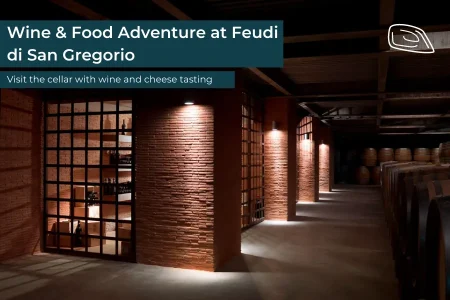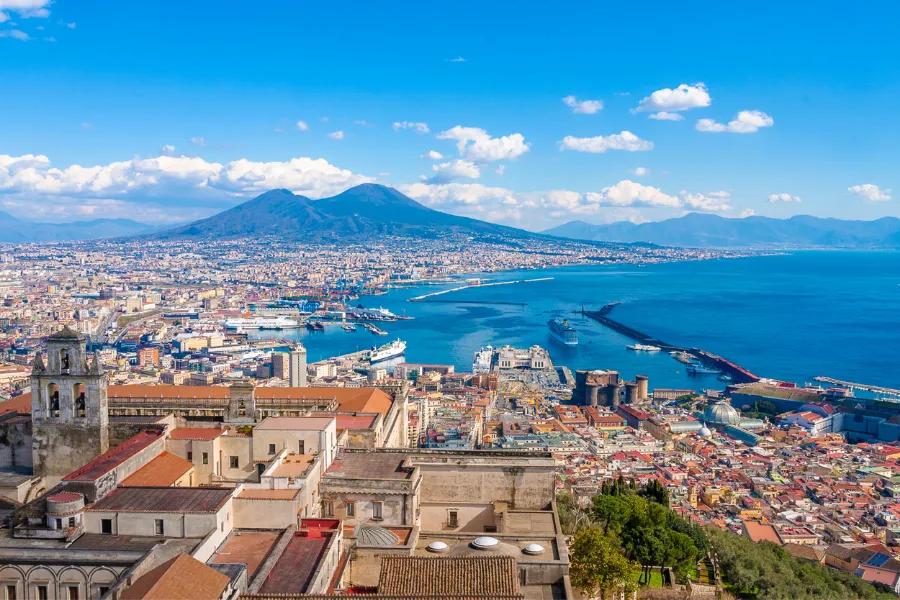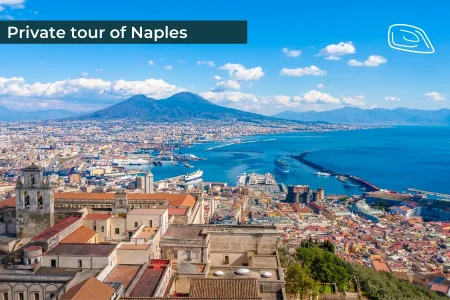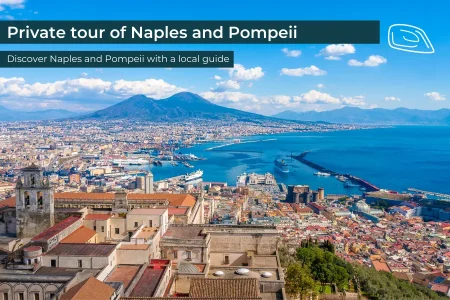Naples
Naples is one of the most iconic cities in Italy and at the same time the most popular destination in the entire Mediterranean region. Its history dates back almost 3,000 years, from the ancient Greeks who founded the territory of Neapolis in the 8th century BC. Since then, this city has undergone countless transformations and has been under the rule of the Roman Empire, the Barbarians, Spain and Austria, just to name a few. Currently, Naples has almost a million inhabitants strongly rooted in the territory and who continue to make it unique for their attachment to the city.
Visiting the city of Naples means, among other things, retracing centuries of history thanks to many ancient and new treasures, good food and breathtaking landscapes, so a summer in the Neapolitan city is all you can want and much more. In Naples, after all, good food is not lacking and in addition to seafood specialities, it is its iconic pizza that has recently been designated a UNESCO World Heritage Site, alongside its historic centre, which also boasts this honour and is the largest and oldest in Europe.
Visiting Naples is possible at any time of the year since the climate allows it. It is also important to point out that, since much of the historic centre is pedestrianised, the municipal authorities have taken steps to create a well-distributed transport network that connects the old Phlegrean line dating back to the 1920s with the recently completed one, namely Line 1. The latter, among other things, presents real modern and ancient works of art in most of the stations. An integral part of the aforementioned railway network is also the four funiculars that allow you to reach the Vomero and the Posillipo area in a few minutes.
Main Attractions
Among the main attractions of Naples, some go for the most known all over the world. To begin with, it is worth mentioning the National Archaeological Museum is housed in a beautifully decorated building that was created in the first half of the eighteenth century by the will of King Ferdinand I of the Two Sicilies. The structure, however, was originally a military cavalry barracks, and in the following years was transformed into a museum inside which you can admire a wide range of Roman and Greek artefacts as well as a selection of works from Pompeii and Herculaneum. This collection also includes marble statues depicting scenes from ancient mythology, beautiful mosaics from the ruins of Pompeii, and a wealth of ancient Egyptian artefacts such as mummified remains and mortuary masks.
Another of Naples' main attractions is Castel Nuovo, also known as Maschio Angioino, which defines the city's skyline. Located near the famous Piazza del Plebiscito, the castle is easily accessible and is one of the main historical sites of Naples. Created in 1282, it has 5 crenellated circular towers and a fantastic triumphal arch added in later times.
For art lovers, there are many churches in the heart of Naples, and the one called Cappella Sansevero is a fine example. Created in 1590, the structure in the following years became the property of Prince Raimondo De Sangro of Sansevero who set it up as it appears today in the eyes of visitors. The Chapel contains an enormous amount of works of art and various sculptures commissioned by the aforementioned prince, as well as a magnificent fresco that adorns the ceiling. The highlight of the visit is however linked to the beautiful statue of the Veiled Christ made by Giuseppe Sanmartino.
The Cathedral of the Duomo is also well-known. This is a magnificent structure considered one of the most important and great churches in the city, both from an artistic and cultural point of view. The Cathedral of Naples, located on Via Duomo, is, therefore, another unmissable place for tourists both for the architectural beauty of its interior and for the Museum of the Treasure of San Gennaro attached to it and which exhibits jewels unique in the world and of inestimable value. This religious building, among other things, combines a myriad of styles including Gothic, Renaissance and Baroque and this is due to the restoration and changes made by its creation.
Lastly, in the aforementioned Piazza del Plebiscito stands the splendid Royal Palace with inside an extraordinary range of preserved rooms full of elaborate decorations.
When it comes to the attractions of Naples you can not fail to mention its historic centre that offers narrow alleys but with a special charm and rich in mystery. Precisely in these contexts, there are some churches with crypts where bones and skulls of people are kept and that the people have been adopting for centuries to be reciprocated with graces. Naples as a cult of the dead is perhaps unique in the world and this makes it even more evocative to walk the alleys at night, experiences that had aroused interest in characters such as W. Goethe and H.K. Andersen. The latter on the occasion of a trip to Naples (then the final stage of the Grand Tour), declared that when he died he would return to be a ghost and enjoy the night claiming that this city was incredibly beautiful!







